September 2023 Vol. 78 No.9
Features
Directional drilling: HDD Hall of Fame Class of ’24 announced
Underground Infrastructure magazine and the Horizontal Directional Drilling Association, in conjunction with the HDD Reunion Organization, are proud to announce the HDD Hall of Fame Class of 2024. Included in this class are legendary names in the HDD industry, including HDD heroes that unfortunately will be honored posthumously.
The HDD Hall of Fame nominating committee named a record six people to the Class of 2024, including its first woman selectee. The formal recognition and awarding of the coveted HDD Hall of Fame granite obelisks will be held at a special ceremony during the renowned HDD Reunion celebration.
Inductees are Marcus Laney, Laney Directional Drilling and MDS Drilling; Ed Malzahn, Charles Machine Works (Ditch Witch); Steve Akerman, C&S Network and Akerman Construction; Mary Andringa, Vermeer Manufacturing; Jim Agnew, INROCK; and Curtis Allen, Baroid Drilling Fluids.
The HDD Reunion and Hall of Fame will be held in conjunction with the Underground Infrastructure Conference (formerly UCT), will begin at 4:45 p.m. on March 20, 2024, at the Oklahoma City Convention Center. During the morning HDD educational program of UIC, there will also be a special interactive session with the Hall of Famers’ or their representatives who will engage in conversations with the audience. History will be relived, tall tales shared, and visionaries revered at both the morning and evening events.
As HDD caught fire and exploded in the ’90s, UIC was the primary event that embraced groundbreaking technology and continues to do so today. Thus, it remains the perfect place for the HDD celebration and the HDD Hall of Fame induction ceremonies. Contractors and related personnel still flock to UCT to learn from the industry’s most extensive HDD educational program, “kick the tires” on new equipment and network with their peers.
As the underground infrastructure industry enters 2024, it’s a challenging time for HDD. Large rig operators that have historically focused on energy are successfully transitioning to different markets since the slowdown in pipeline construction work. Small rig operators, on the other hand, are backlogged with sometimes too much work, thanks to the fiber/5G boom. All are experiencing critical workforce shortages and parts/equipment distribution issues.
Despite those issues, the HDD market remains a highly popular, effective and amazingly efficient method to install everything from steel pipe to fiber conduit. HDD continues to experience geometric growth, as virtually every market segment for underground utility and pipeline infrastructure construction heavily utilizes the technology.
Though HDD’s early history only dates back to the 1960s, its participants quickly became a fraternity of trend-setters. The HDD Reunion allows established, older or retired drillers to converse with current operators. Attendees, young and old, swap stories, compare and contrast early equipment with modern tools, share experiences, and renew and sustain old friendships. Those new to the industry will find the information and knowledge gained extremely useful in their current jobs.
The event is for all those who have participated in the industry throughout the years, including contractors, owners, engineers and manufacturers, no matter the rig size, from jumbo to mini units. In short, the purpose of the reunion and the HDD Hall of Fame is to celebrate the comradery that is HDD.
2024 HALL OF FAME MEMBERS
J. Marcus Laney (deceased)
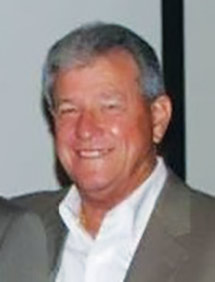
Marcus “Mark” Laney, former partner and president of Laney Inc., was known for exemplary work in boring highways and drilling rivers for pipeline contractors. He passed away June 26, 2023, at age 81.
Mark was introduced to road boring when he was only 16 years old, working for Docs Road Boring. Building on the knowledge he gained, he joined brothers Dickey and Steve to start a boring business, Laney Inc., in 1979.
In 1989, when Laney Directional Drilling opened for business, HDD was still an unproved option for underground utility construction, not seriously considered by most project owners. For large pipeline projects, HDD offered an option for making crossings under rivers and other bodies of water, highways and areas where excavation was impossible or impractical.
An early challenge, however, was the lack of equipment to make trenchless pipeline crossings. Mark’s solution was to design and build his own HDD rigs, with Robert Hamil.
Laney-built drilling equipment quickly got larger, and it and the operating crews became well-known and respected in the industry for completing long, difficult HDD installations under adverse conditions.
Ed Malzahn (deceased)
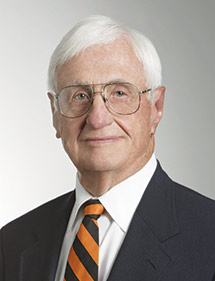
The utility construction industry lost a giant with the Dec. 11, 2014, passing of Ed Malzahn, chairman of the Charles Machine Works Inc., better known as Ditch Witch. Malzahn’s invention of a compact trenching machine paved the way for changes in the way essential utility services are delivered to customers.
In 1948, Ed designed the world’s first compact trenching machine, a product he envisioned could be used to dig water and gas service lines to houses which at that time was done by hand. Ed, a recent engineering graduate of Oklahoma A&M College (now Oklahoma State University), devoted two years working in his father’s Perry machine shop to perfect the new product. The original Ditch Witch product was born.
He kept the company on track and focused on its path forward. Ed did so with respect for his employees, customers, competitors and the industry.
In the late 1980S, Ed, always searching for a better way to serve the utility construction industry, partnered with the then-named Gas Technology Institute to develop a better steering system for the evolving underground boring market. Under his consultation and direction, the slant-head boring head was introduced – a tool that essentially made small directional drilling practical.
The slant heard drill bit was originally mounted on a sled-type boring machine and displayed at an early ICUEE Show. Still not happy with the product, Ed purchased the rights to a small wheel-mounted boring machine and, along with Ditch Witch engineers, completely overhauled and redesigned both his sled unit and the wheeled machine into the company first mobile, wheeled directional drilling rig that used the radical (at the time) slant-head bit. The historic small directional drill called Jet-Trac was born and the explosion of drilling rigs followed.
Steve Akerman
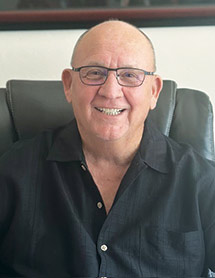
Born April 20, 1956, Steve Akerman was raised in Lindsay, Okla. He started his career with the oilfield in 1974 as a roughneck for H & P Drilling Company. Through hard work and determination, he worked his way up to tool pusher. Steve continued his career with Houston Engineering in 1978, working as a fishing tool and blowout consultant for eight years.
He decided to venture into his own business in 1986 and created Akerman Fishing Tools, reclaiming damaged wells. During this period, he also started a ranch and farming business and in 1988, he branched out further into the underground construction business, starting C & S Directional Boring, working mainly with pipelines, primarily road boring. Steve made the company a family business by bringing in his sons, Steven, Mark and Matt, and son-in-law Jaime.
It was during this time that Steve started receiving calls from industry associates asking if horizontal directional drilling was something he would be interested in. After researching the technology, C&S took the plunge and began HDD work. As the company became more adept at HDD, Steve built an exceptional reputation by completing many difficult, high-profile projects. The company was well-known for bringing new vision and energy to the utility construction market.
Steve sold C & S in 1997 to Mastec. He spent two years with Mastec, heading their nationwide HDD program.
He started Akerman Construction in 2003 and a year later he was contacted by Sydney Water, Sydney, Australia, to consult on multiple utility projects in Australia and Hawaii. During this period of his career, Akerman Construction/HWD contracted many projects in multiple countries and throughout the United States.
In 2006, Steve, with years of experience and knowledge in the oilfield and utilizing HDD technology, became one of the leading manufacturers of a new style of automated oil and gas drilling rig, featuring technology that he had designed and patented.
The company was sold in 2014 and Steve fully retired to enjoy life with his wife of 40 years.
Mary Andringa
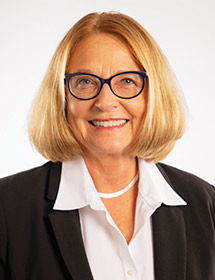
The Vermeer horizontal direcional drilling (HDD) product line has been a significant part of the company’s history. The introduction of HDD coincided with the company’s transition from first-generation to second-generation leadership.
Gary Vermeer found the idea of installing utilities underground without disturbing the surface intriguing. In the late 1980s, his daughter, Mary, took the idea further by forging business relationships and leading a team of engineers and product specialists to develop the first Vermeer HDD.
Through Mary’s leadership, Vermeer introduced its first HDD for testing in early 1991. The first generation of drills required significant manual labor. So, Mary and her team continued to develop innovative technology to make the HDD line more efficient and productive. With the input of customers and dealers, Vermeer introduced its first self-contained drill in 1993. By the end of the nineties, HDD accounted for half of the company’s business.
The team led by Mary achieved important milestones in the 1990s, including creating a rod loader to simplify the process of handling drill rods and developing a new standard in drill rods with the single-piece forged-steel Vermeer Firestick® drill rod, which helped increase the successful bore completion rate of horizontal directional drilling.
Mary understood that the Vermeer team was helping to create more than just a new utility installation machine. They were helping to develop a brand new market, and to do that, they needed to educate and train Vermeer dealers and contractors throughout the world. Mary prioritized local in-the-field training, which helped prove that HDD was a viable installation method in a wide range of ground conditions. Operator manuals and new safety features, such as remote lockout, were also introduced on Vermeer drills during this time period.
At the turn of the decade, the HDD market was significantly impacted by a downturn in the Internet technology sector. But Mary continued to emphasize the importance of continuing to develop new product innovation and forge partnerships with other companies to help grow the market as a whole. Through Mary’s diligent efforts and dedication to the HDD market and other industry pioneers, the industry continues to excel today.
Curtis Howard Allen (deceased)
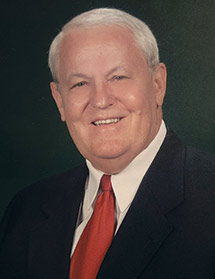
Curtis Howard Allen was born March 3, 1942, in Laurel, Miss., and grew up in Heidelberg, Miss. He spent most of his childhood and teenage years working at his family-owned business, Waukaway Springs, a renowned fresh water playground in Mississippi.
After high school Curtis attended Mississippi State University where he played football (full-back) and earned an engineering degree. Curtis worked primarily in the oilfield until the early 1990s when he, along with Frank Cannon, served as key contributors to the application of drilling mud for the HDD industry. Curtis was a regional sales manager for Baroid (Halliburton) and traveled the world (often joined by his wife Eva Ann) doing mud schools and drilling fluids training.
He was active in the Distribution Contractors Association and the Directional Crossing Contractors Association. He was a member of Immaculate Conception Catholic Church and an active member in the Knights of Columbus.
Jim Agnew
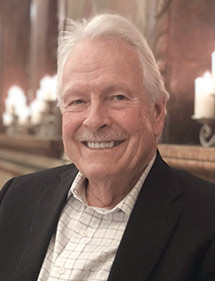
Like many of the early horizontal directional drillers, Jim Agnew started his work career in the West Texas oilfields. In the summers at his childhood home of Crane, Texas, he worked as a roustabout saving money for college. He graduated from Angelo State University in 1969. While in college, Jim continued to work in oilfield services to pay for his college.
After college, Jim spent 10 years coaching athletics in West Texas before he returned to oilfields to make a better living and support his growing family. After four years selling oil field chemicals, Jim switched companies to begin downhole tooling sells for directional drilling for Wilson Down Hole. After 10 years, he again was hired at Smith International’s directional drilling division and worked in well planning for four years.
His life changed dramatically when in 1993, Jim transferred to Houston and, along with Frank McKenney and Brent Lane, formed a new drilling division for Smith International that, among other things, was instrumental in bringing larger directional drilling mud motors from the oilfield. The trio left Smith to join a business venture with Sharewell. Shortly after, the started their own company, INROCK Directional Drilling. Jim spent 30 years vice president of operations, teaching contractors how to use mud motors and hole openers. The company is still going strong today.




Comments